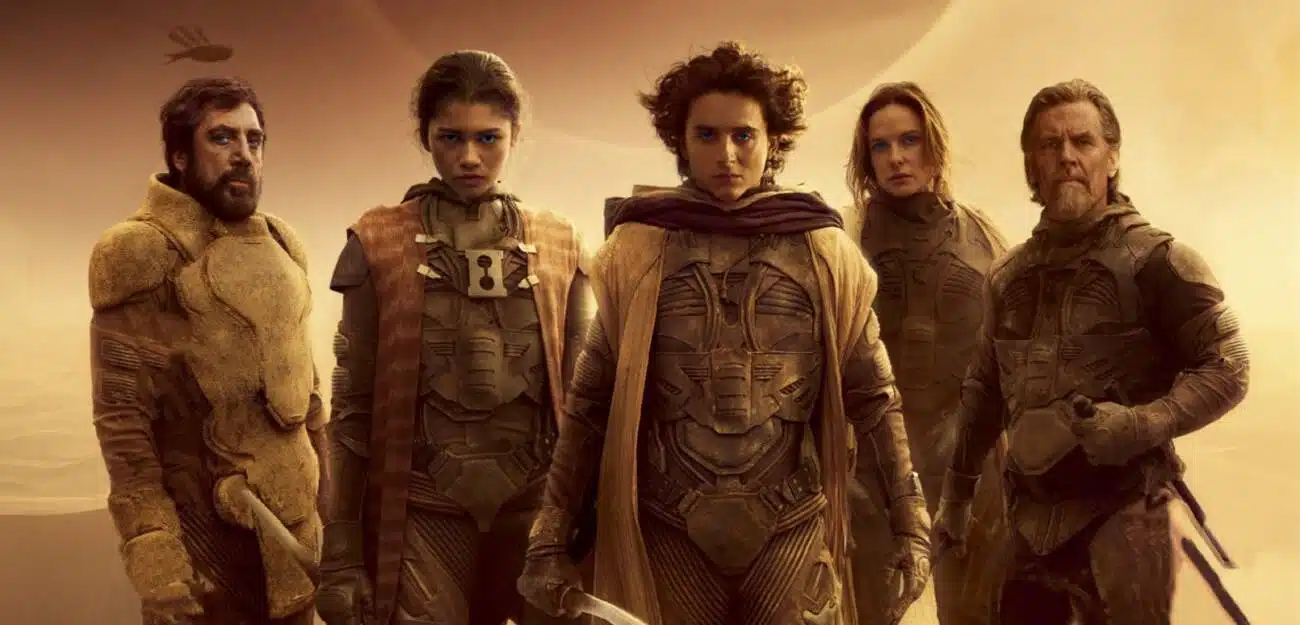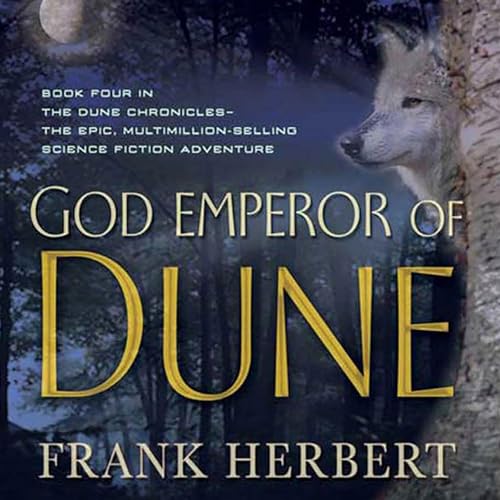How to Read the Dune Book Series in Order
The Book Guide® is a participant in the Amazon Services LLC Associates Program, an affiliate advertising program designed to provide a means for sites to earn advertising fees by advertising and linking to Amazon.com. As an Amazon Associate I earn from qualifying purchases.
Understanding the Importance of Reading Frank Herbert’s Dune Books in Order

Frank Herbert’s Dune series has captivated readers for generations with its complex characters, intricate world-building, and exploration of themes like politics, ecology, and religion. However, with multiple novels and prequels, the order in which to read the series can be a source of confusion. Because when diving into a complex and expansive series like Dune, understanding the correct reading order is crucial to fully immerse yourself in the intricate narrative woven by Frank Herbert. By following the chronological sequence of the books, you will uncover the depth of character development, intricate plot twists, and philosophical themes that make Dune a timeless classic in the realm of science fiction literature.
How to Read the Dune Books: Choosing the Right Order for You
There are two main approaches to reading the Dune series: publication order and chronological order. This guide will equip you with the knowledge to embark on your journey through the Dune universe in the most fulfilling way, answering the crucial question: “Frank Herbert Dune books in order: what is the best way to read them?”
Frank Herbert’s Dune Publication Order
- Dune (1965)
- Dune Messiah (1969)
- Children of Dune (1976)
- God Emperor of Dune (1981)
- Heretics of Dune (1984)
- Chapterhouse: Dune (1985)
To embark on your journey through the world of Dune, it is essential to start with the foundational novel, “Dune,” which introduces readers to the desert planet of Arrakis and its complex political landscape. Following “Dune,” readers can explore the subsequent novels in the series such as “Dune Messiah,” “Children of Dune,” “God Emperor of Dune,” “Heretics of Dune,” and “Chapterhouse: Dune.” Each book builds upon the legacy of its predecessor, offering a rich tapestry of storytelling that captivates readers with its depth and complexity.
Dune
Duke Leto Atreides accepts stewardship of the harsh desert planet Arrakis, the sole source of the universe’s most valuable commodity, spice. He faces treachery, betrayal, and the fierce Fremen people as he navigates the complex political landscape and battles the cunning Harkonnens.
Dune Messiah
Twelve years after the events of Dune, Paul Atreides, now Emperor Paul Muad’Dib, grapples with the consequences of his actions and the burden of his messianic status. He faces religious fanaticism, political dissent, and a conspiracy that threatens to unravel his reign.
Children of Dune
Decades have passed, and Paul’s children, Leto II and Ghanima, face challenges of their own. Leto embarks on a dangerous transformation, while Ghanima navigates the political and religious turmoil surrounding their family legacy.
God Emperor of Dune
Millennia have passed, and Leto II has transformed into a god-like figure, ruling over Arrakis with an iron fist. He faces internal conflict and external threats as he attempts to guide humanity towards a predetermined future.
Heretics of Dune
Humanity has scattered across the galaxy, and the Bene Gesserit sisterhood faces a new threat. A mysterious order known as the Honored Matres emerges, challenging the established powers and jeopardizing the future of the universe.
Chapterhouse Dune
The Bene Gesserit scramble to preserve their order and the future of humanity as the Honored Matres tighten their grip. The fate of the Dune universe hangs in the balance as a final confrontation looms.
The Chronological Order of Frank Herbert’s Dune Series.
The chronological order delves deeper into the universe’s backstory, introducing events and characters that predate Paul Atreides’ story in Dune. However, this order requires reading several prequel novels written by Brian Herbert and Kevin J. Anderson, which are not essential for understanding the core Dune saga. If you’ve already read the core series and want to delve deeper, exploring the chronological order with the prequel novels can provide additional insights. However, be aware that these prequels can alter your understanding of certain characters and plot points introduced in the original novels.
Dune Prequel Novels: Exploring the Depths of History
While not essential for understanding the core Dune saga, the prequel novels offer a chance to delve deeper into the rich tapestry of the Dune universe. These books explore pivotal events, the rise of influential factions, and the origins of key characters, providing a broader context for the events that unfold in Frank Herbert’s original novels.
Dune Prequels Order:
- The Butlerian Jihad
- The Machine Crusade
- The Battle of Corrin
- Sisterhood of Dune
- Mentats of Dune
- Navigators of Dune
The Butlerian Jihad
This novel explores the war between humanity and thinking machines that led to the creation of the Mentats and the Guild.
The Machine Crusade
Following the Butlerian Jihad, this book delves into the aftermath of the war and the rise of the Spacing Guild.
The Battle of Corrin
This prequel focuses on the pivotal battle that cemented the ban on thinking machines and solidified the power of the CHOAM Company.
Sisterhood of Dune
This novel explores the origins of the Bene Gesserit, a powerful sisterhood with advanced breeding programs and mental abilities.
Mentats of Dune
This prequel delves into the history of the Mentats, human minds trained to peak mental performance, and their role in the Dune universe.
Navigators of Dune
This final prequel explores the Spacing Guild, the organization that controls interstellar travel due to their unique ability to navigate through space using prescience.
FAQs About Frank Herbert’s Dune Books in Order
What is the recommended order to read Frank Herbert’s Dune books?
For first-time readers, starting with the publication order is highly recommended: Dune (1965); Dune Messiah (1969); Children of Dune (1976); God Emperor of Dune (1981); Heretics of Dune (1984); Chapterhouse: Dune (1985). This order allows you to experience the story as Frank Herbert intended, with each book building upon the previous one and gradually revealing the mysteries of the Dune universe.
Is there a chronological order for the Dune books?
Yes, there is a chronological order, but it involves several prequel novels written by Brian Herbert and Kevin J. Anderson. These prequels are not essential for understanding the core Dune saga and can alter your understanding of certain characters and plot points introduced in the original novels.
What are some of the prequel novels in the Dune universe?
Some of the prequel novels in the Dune universe include: The Butlerian Jihad (2002); The Machine Crusade (2003); The Battle of Corrin (2004); Sisterhood of Dune (2011); Mentats of Dune (2014) and Navigators of Dune (2016)
Are the prequel novels necessary to understand the Dune series?
No, the prequel novels are not necessary to understand the core Dune saga by Frank Herbert. They provide additional context and backstory but are not essential for following the main storyline.
Are the newer books by Brian Herbert and Kevin Anderson part of the Dune series?
Yes, the newer books by Brian Herbert and Kevin Anderson are part of the Dune series and are considered canon by Herbert Properties LLC, which owns the rights to Dune.
Is there anything else I should know before starting the Dune series?
Frank Herbert’s Dune series is known for its complex and intricate world-building. It is recommended to read the original six Dune books by Frank Herbert in order of publication before exploring other works in the Dune universe.
Conclusion
Regardless of the order you choose, Frank Herbert’s Dune series promises an unforgettable journey. With its captivating characters, thought-provoking themes, and rich world-building, the saga is sure to leave a lasting impression. So, grab your copy, suit up for the harsh desert environment of Arrakis, and prepare to be swept away by the legend of Dune.



























